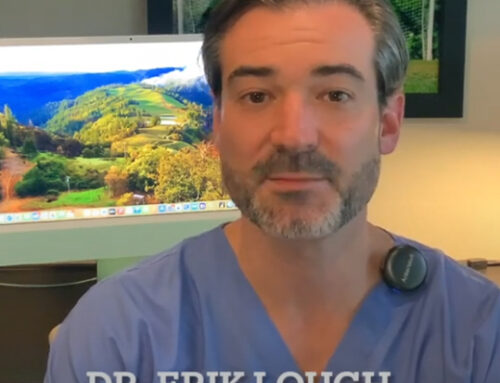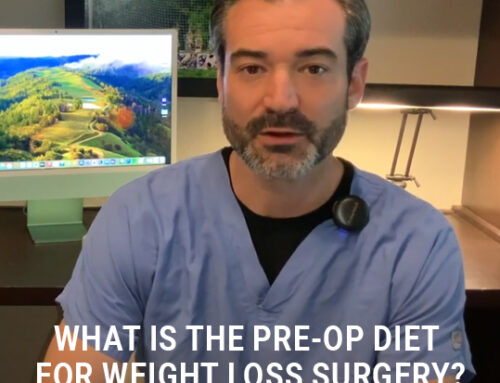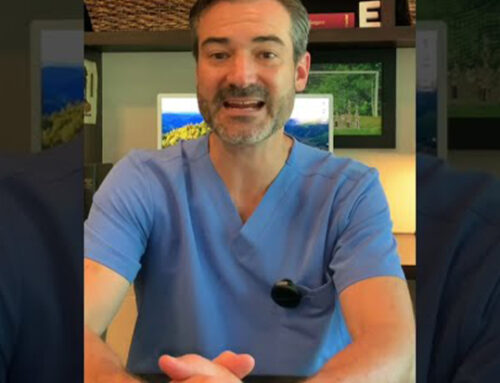What is the Diet Progression After Weight Loss Surgery Part 2?
In this video, Dr. Erik Lough walks you through Stages 4 and 5 of your post-weight loss surgery diet. Discover how to move from soft foods to a regular diet, the best foods to eat, portion tips, and how to keep up with supplements and hydration. This is Part 2 of the series—check out Part 1 for Stages 1–3, from clear liquids to pureed foods.
Dr Erik Lough
General and Bariatric Surgeon
Dr Erik Lough answers the question: What is the Diet Progression after Weight Loss Surgery Part 2?
Hi I’m Dr Erik Lough answering common questions that patients ask me about general and weight loss surgery. Today I answer the question, what is the diet progression after weight loss surgery? This video is part 2 of 2 videos and will cover stages 4 and 5. Part one for stages 1 through 3.
As you tolerate your pureed foods you can now move in to Stage 4 which is soft foods during days 22 to 28. Remember to eat slowly, take small bites, and chew your food well. Its not a bad idea to count how many times you chew, and definitely avoid liquids 30 minutes before and after mealtimes. Foods in this stage include canned fruits or vegetables, baked potatoes, fish, eggs, soft cheese and even some crackers. Same as in stage 3, it is a good idea to continue that habit of a protein shake daily as well as some fiber supplement. Keep up with your multivitamin and calcium. And I’ll say it again to eat slowly and chew your food well, speed eating is your enemy.
Finally you are on stage 5 starting week 5 after surgery and continue this for about a month. This is the final stage and is considered Regular diet. Time for fresh fruit and vegetables, beef, chicken, and turkey. You can eat the same food as many other people around you like your family, friends and coworkers. The key is small portion sizes and go just as slow as you did in Stage 4. A meal might only be 5 or 6 bites total and you feel totally stuffed. Go slow so you can identify if your are full before its too late. Please watch part 1 where I go over stages 1 thru 3.
What is Duodenal Switch? | Dr Erik Lough
General and Bariatric Surgeon, Dr Erik Lough answers the question: What is Duodenal Switch?
Hi I’m Dr Erik Lough answering common questions that patients ask me about general and weight loss surgery. Today I answer the question, what is duodenal switch?
Duodenal Switch has been around for many decades but the latest and greatest form of this procedure is known as Single Anastomosis Duodenal Ideal bypass with Sleeve gastrectomy or SADI-S for short. This is also the newest procedure to be endorsed by the American Society for Metabolic and Bariatric Surgery. It is the most simple form of the Duodenal Switch and takes much less time to perform. It also incorporates a Sleeve Gastrectomy, a weight loss surgery you may already be familiar with, and you can think of this surgery as supercharging a Sleeve. I often tell my patients that a Duodenal Switch is like a hybrid between and Sleeve and a Gastric Bypass taking the mealtime restriction and fullness features of a Sleeve and the reduced absorption features of a Gastric Bypass. For this reason it can have double the weight loss of a Gastric Sleeve and better resolution of obesity related health problems than a Gastric bypass, Diabetes being the most notable.
Once a patient is asleep under general anesthesia, I make several small incisions on the abdomen. I put my camera through one incision and my working instruments through the other incisions. I dissect around the outer part of the stomach to free up its attachments and then I use a surgical stapler to make a tube shape out of the stomach. Then the outer part of the stomach is removed from the body. The Gastric Sleeve part of the operation is now complete. The first part of the small intestine is divided with a stapler just beyond the exit of the Sleeve. A loop of intestine is measured several feet from its end and a new connection to the end of the Sleeve is created.
When you eat, food comes into the Gastric Sleeve and you feel full with a very small amount of food but you also feel satisfied by that small amount (reducing your total intake). After leaving the stomach, food goes directly into the latter portion of the small intestine mixing with digestive juices from the first part of the small intestine. This allows enough absorption of vitamins and minerals to maintain healthy levels of nutrition, but you will also lose weight because of reduced absorption of all the calories.
Surgery takes about 2 hours and I send many patients home the same day. My average patient starts out with a BMI in the 50s and over the course of a year loses weight to a BMI in the high 20s to low 30s. One last thing is that because part of the Duodenal Switch uses a Gastric sleeve, this surgery is an excellent option for a patient who already had a sleeve gastrectomy and is seeking further weight loss.




